#nure tsubame
Text

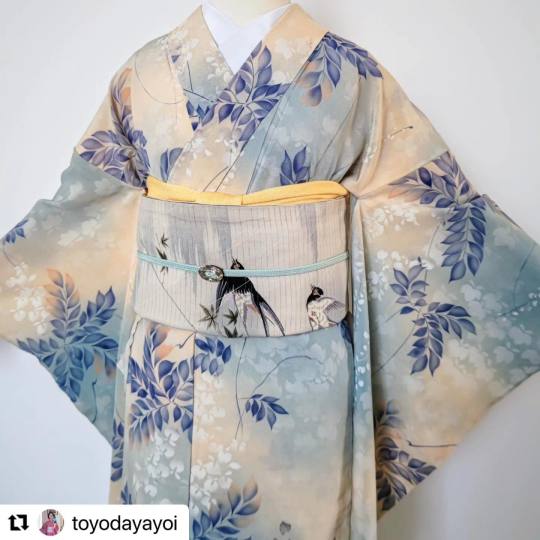
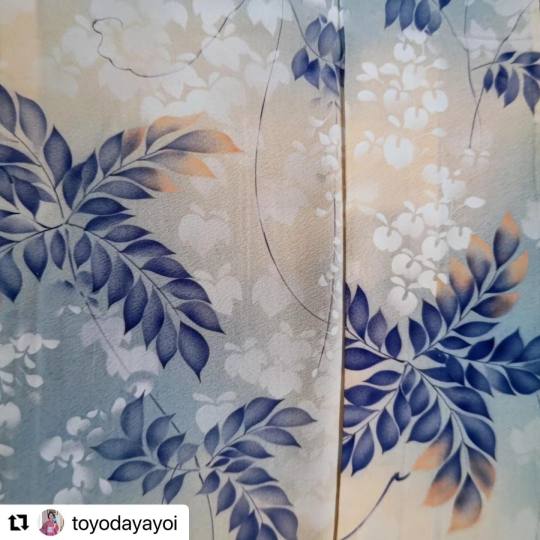


Silvery blue hues for this antique outfit, pairing a fresh kimono pattern with fuji (wisteria) and discreet sakura (cherry blossoms), with a nure-tsubame (swallows in the rain) summer weave obi
#japan#fashion#kimono#obi#summer in japan#fuji#wisteria#sakura#cherry blossom#nure tsubame#swallow in the rain#swallow#tsubame#着物#帯
248 notes
·
View notes
Photo
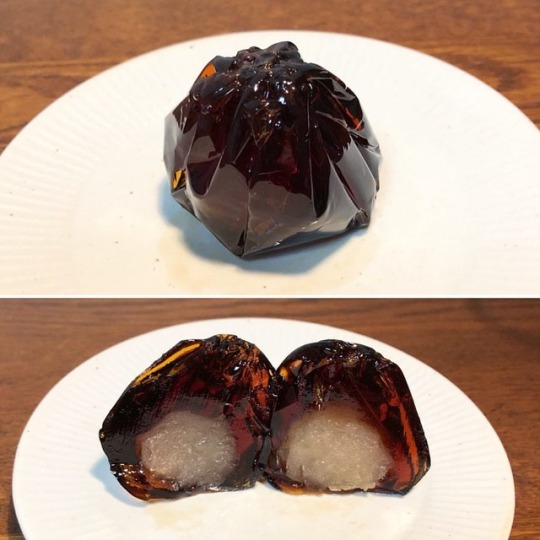
★ Jun. 4, 2018
Kawaguchiya, Nagoya: nure-tsubame* (lit. wet/glossy black??-swallow)
——–
Jelly-like ‘kohaku(-kan)/kingyoku(-kan)’ mixed with muscovado (refined/partly refined/unrefined brown sugar) syrup, and filled with chunky-type white bean paste.
——–
* A type of elegant word?
——–
#wagashi #japanesesweets #sweets #teaceremony #tea #chanoyu #matcha #foodie #dessert #japanesetea #food #japan #japanese #nagoya #名古屋 #お菓子 #和菓子 #スイーツ #お茶 #抹茶 #茶道 #川口屋 ぬれ燕
#お茶#japan#川口屋#和菓子#お菓子#foodie#抹茶#wagashi#名古屋#sweets#instasweets#foodpics#tea#nagoya#スイーツ#instafood#japanese#茶道#dessert#japanesesweets#teaceremony#matcha#chanoyu#japanesetea
91 notes
·
View notes
Photo
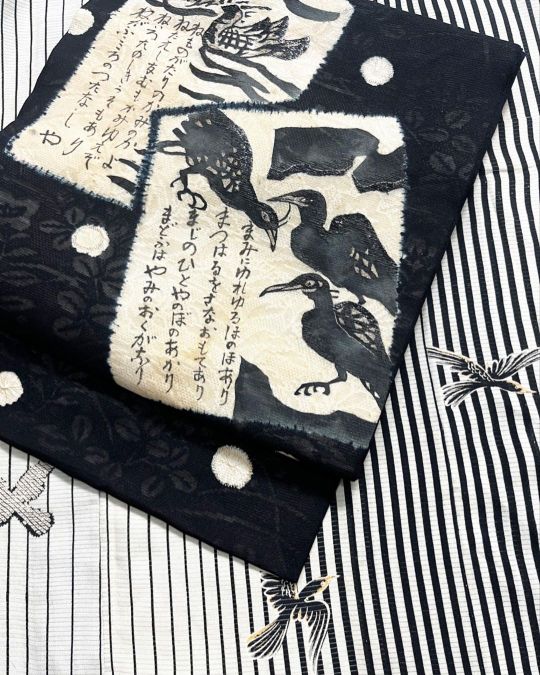
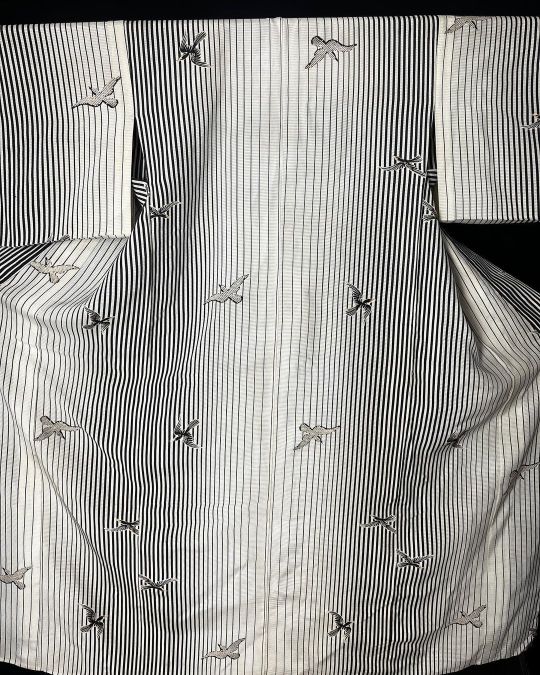
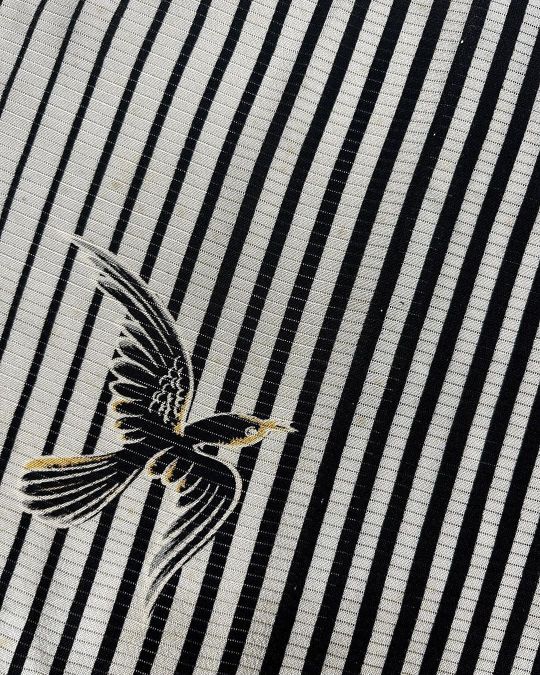
Funky birdies for this crepe b&w obi, paired with a lovely swallows over stripes matching summer kimono
193 notes
·
View notes
Note
Hi! Sorry for bothering you, I just wanted to ask if you know if there are any kimono patterns inspired by rain specifically? I know snow is a popular motif, but when I've tried searching for rain I didn't really come up with any meaningful results. Thank you in advance!
no worries, I am always happy to help :3
Rain is generically called ame 雨 but that word is not used as such to describe rain inspired patterns so I am not suprised your search didn't bring much (btw, did you know Japanese has a LOT of vocabulary for rain ^^?).
You can have a look at following patterns:
arashi 嵐 (lit. storm), especially arashi shibori 嵐絞り, representing pouring rain via irregular stripes
arare 霰 (lit. hail), regular or irregular tiny dots pattern representing hail (duh) or raindrops
mizutama 水玉 (lit. water beads), polka dots like pattern, representing water drops
Many kind of stripes can hint at rain tbh, see then if kimono or obi has any other pattern giving any hints (hydrangea/ajisai for example are THE star of rainy season in Japan). Rain can be mixed with other concepts like:
nure tsubame 濡れ燕 (lit. wet sparrow), showing swallows in the rain, a romantic pattern symbolizing lovers (especially star crossed)
tsuyu shiba 露芝 (lit. rainy season grass), blade of grass with a dewy water drop
kasa 傘 / janomegasa 蛇の目傘, umbrellas (often with a bull's eye design)
#ask#rain#ame#pattern#arashi#storm#arare#hail#mizu tama#water drops#polka dots#nure tsubame#swallow in the rain#tuyu shiba#dewy grass#kasa#janomegasa#bull's eye umbrella#umbrella#tsuyu#rainy season
132 notes
·
View notes
Photo
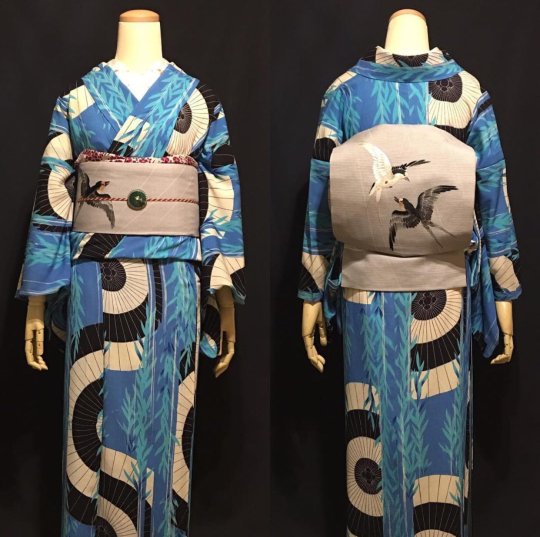
Nure tsubame (swallow in the rain) antique obi, paired with an antique kimono bearing ja no megasa (”snake eye” umbrella) and yanagi (willow) pattern.
This beautifull outfit plays on very romantic imagery as nure tsubame is a symbol of lovers, which was especially fashionable in Edo floating world districts. The willow+umbrella pair also stress the same imagery.
This can for example be seen in Kabuki play “Sayaate”, where character Nagoya Sanza wears this pattern association, stressing his romantic personnality:
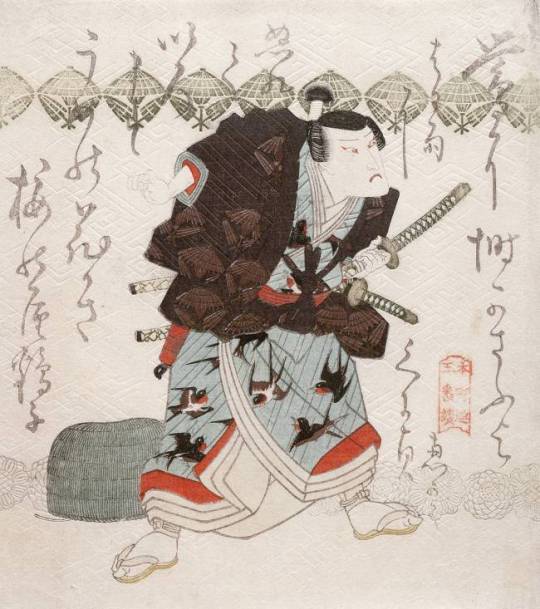
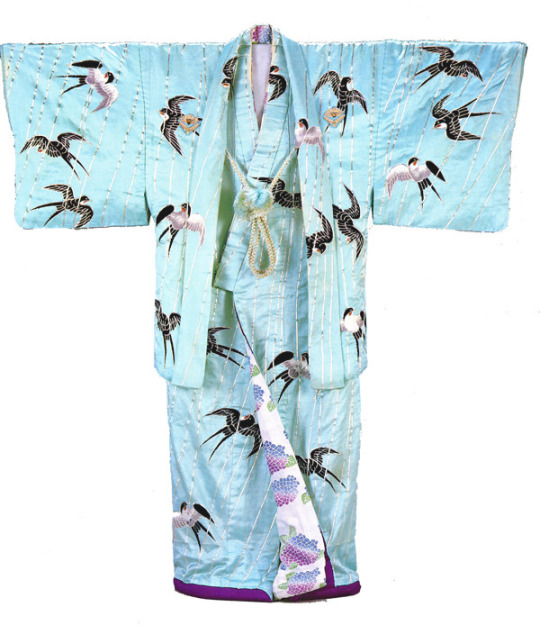
[pictures: 1 / 2 ]
#japan#fashion#kimono#obi#nure tsubame#tsubame#swallow#swallow in the rain#ja no megasa#umbrella#paper umbrella#bull eye umbrella#yanagi#willow#kabuki#floating world#ukiyo#Sayaate#Nagoya Sanza
362 notes
·
View notes
Photo
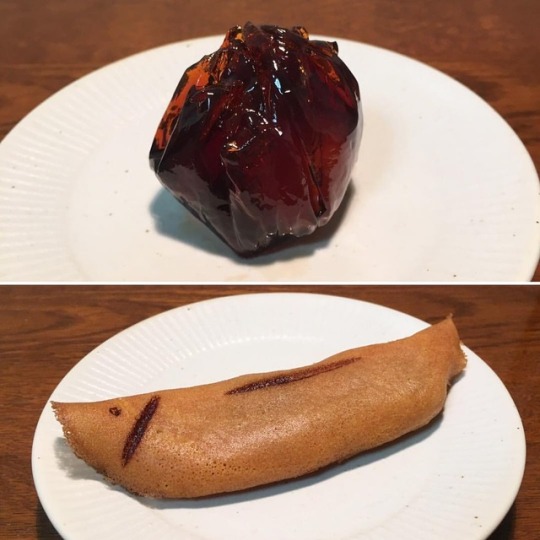
★ Jun. 23, 2017
Kawaguchiya, Nagoya:
1) nure-tsubame (lit. wet/glossy black??-swallow [poetic diction])
2) waka-ayu (lit. young-sweetfish)
——–
1) Jelly-like ‘kohaku(-kan)/kingyoku(-kan)’ mixed with muscovado (refined/partly refined/unrefined brown sugar) syrup, and filled with white bean paste 'shiro-an’.
——–
2) The combination of thin 'domyoji’-type rice cake and a small amount of chunky-type sweet bean paste 'tsubu-an’, wrapped probably with a pancake-like 'chofu’ texture.
As a seasonal delight in (early) summer, the freshwater fish is very popular among Japanese people.
——–
#wagashi #japanesesweets #sweets #teaceremony #tea #chanoyu #sadou #chadou #japan #japanese #nagoya #名古屋 #スイーツ #和スイーツ #お茶 #茶道 #菓子 #お菓子 #和菓子 #川口屋 #ぬれ燕 #若鮎
#菓子#sweets#japanesesweets#chadou#名古屋#茶道#teaceremony#お菓子#ぬれ燕#川口屋#tea#japan#お茶#nagoya#instasweets#wagashi#instafood#若鮎#japanese#和菓子#和スイーツ#chanoyu#sadou#スイーツ
31 notes
·
View notes